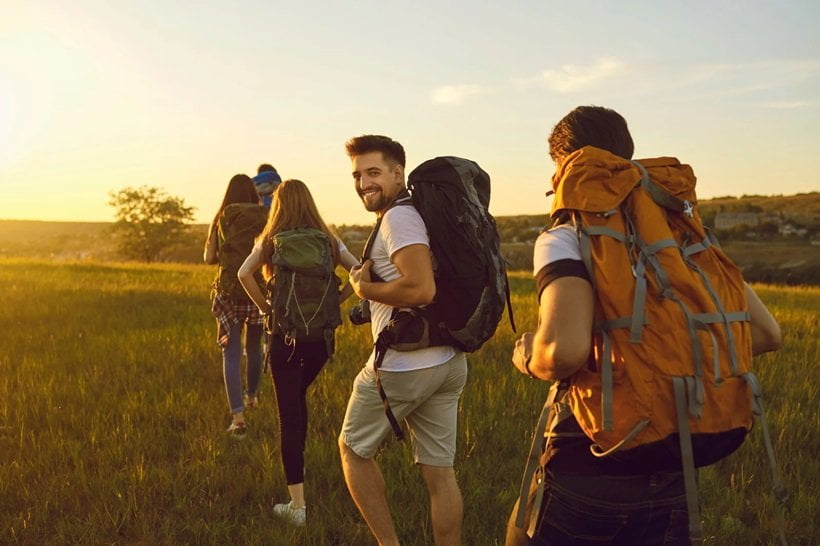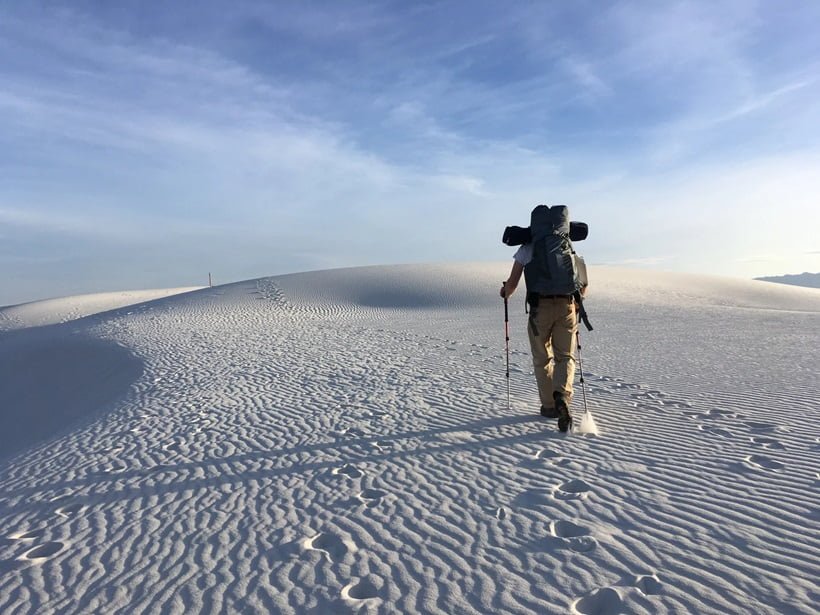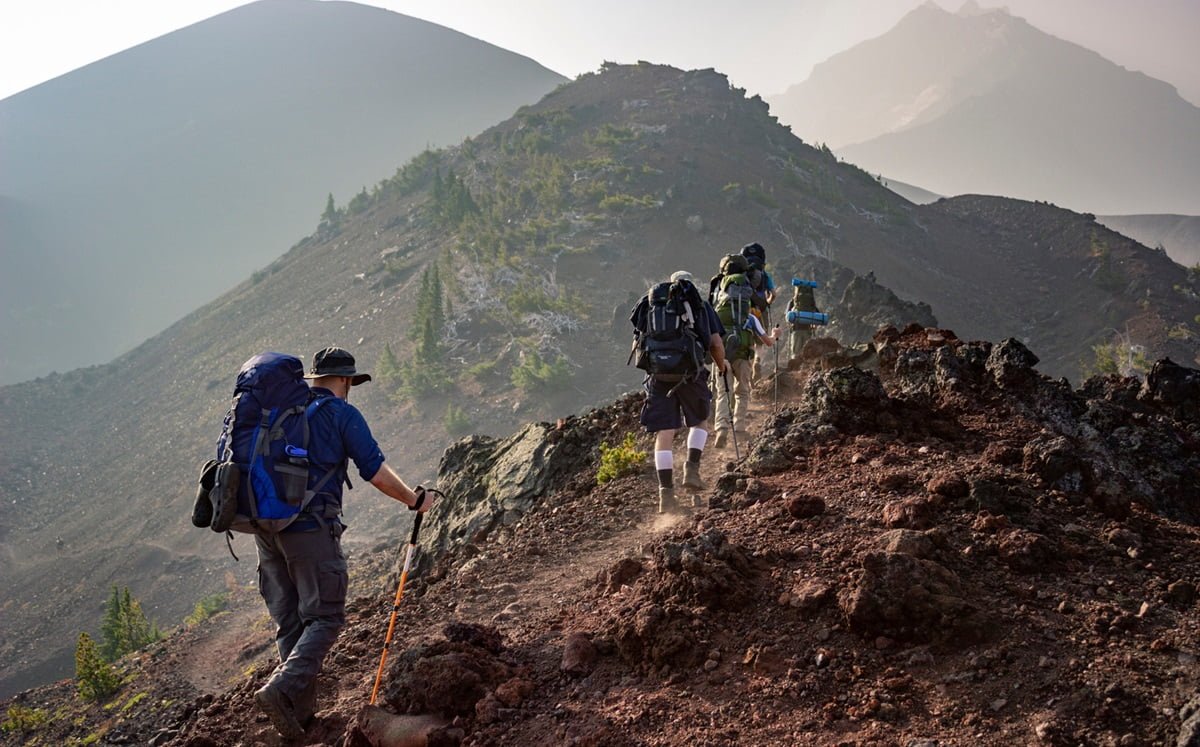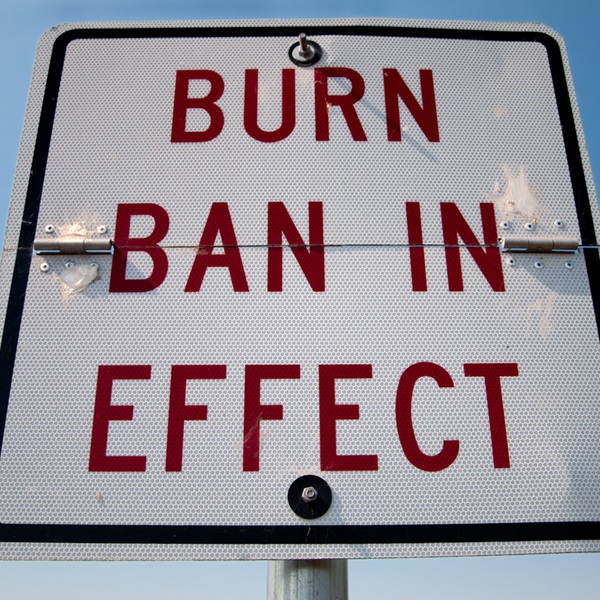
Many people use trekking and hiking terms interchangeably. However, these two terms are distinct outdoor activities that cater to different levels of adventure and endurance. Both provide exhilarating ways to immerse yourself in nature. But, when it comes to comparing, hiking vs tracking showcases many differences in terms of duration, terrain, accommodation, etc.

What is Trekking?
Trekking is a vigorous outdoor activity that involves long-distance walking across diverse terrains, often in remote and challenging environments. Unlike hiking, which is typically a day-long endeavor, trekking spans multiple days and requires significant endurance, preparation, and planning.
In addition, trekkers venture into uncharted territories, traversing mountains, forests, and valleys, and often staying in tents or rustic lodges along the way. This immersive experience allows adventurers to connect deeply with nature and local cultures, as they pass through isolated villages and untouched landscapes. In the debate of trekking vs hiking, trekking stands out for its demanding nature and the profound sense of achievement it offers upon reaching the journey’s end.

What is Hiking?
Hiking is a popular outdoor activity that involves walking on well-marked trails and paths, usually within a single day. It is an accessible way for people of all ages and fitness levels to enjoy nature and experience the great outdoors.
Hikers can choose from a variety of trails, ranging from easy, flat routes to more challenging, steep paths, often in national parks, nature reserves, or local forests.
Unlike trekking, which requires extensive preparation and endurance for multi-day adventures, hiking is more flexible and requires less gear. When comparing hiking vs trekking difference, hiking is generally seen as the more approachable option.

Difference Between Trekking and Hiking
While trekking and hiking both involve walking in natural settings, they cater to different types of outdoor enthusiasts due to their varying demands and experiences. Understanding hike vs trekking can help you choose the activity that best aligns with your preferences and physical abilities. Here, we compare hike and trek difference based on several key factors: duration, terrain, accommodation, equipment, and difficulty.
Duration
Trekking hiking difference in durationimpact the level of commitment and preparation required for each.
Trekking: Trekking typically involves multi-day journeys, often stretching from a few days to several weeks. This extended duration means that trekkers need to be prepared for sustained physical activity and carry their gear and supplies for prolonged periods. In addition, treks are usually planned meticulously to include rest days and to manage the overall strain on the body. This extended adventure allows for deeper immersion into nature and local cultures. Lastly, trekking provides a rich, transformative experience.
Hiking: Hiking is generally a shorter activity, usually completed within a single day. Hikers can embark on trails that range from a couple of hours to a full day. This duration difference makes it a more accessible and flexible option for those with limited time. In addition, the shorter duration requires less preparation and fewer supplies. And trekking allows individuals to spontaneously enjoy the outdoors. Lastly, hikers can easily fit a hike into their weekend or vacation plans without the need for extensive planning or time off work.
Difference Between Hike and Trek Terrain
The terrain encountered during hike vs trekking can vary greatly, influencing the level of difficulty and type of experience.
Trekking: Trekking often takes place in remote, rugged, and diverse terrains, including mountains, forests, valleys, and sometimes even deserts. For instance, trekkers must navigate challenging and unpredictable paths, often without clear trails. This type of terrain demands a higher level of fitness and technical skill, as trekkers might face steep ascents, river crossings, and rocky paths. The varied landscapes trekkers traverse offer stunning, unspoiled scenery, but also require careful navigation and preparation for potential hazards.
Hiking: Hiking usually occurs on well-marked and maintained trails, making it more accessible and straightforward. These trails can be found in national parks, nature reserves, and local outdoor areas. The terrain is generally less challenging, with clearly defined paths and minimal obstacles. While some hikes can include steep sections and rocky areas, they are typically designed to be safe and manageable for people of varying fitness levels. The familiar and predictable nature of hiking trails makes them ideal for casual outdoor enthusiasts and families.
Difference of Hiking and Trekking Accomodation
Accommodation options during trekking and hiking vary, reflecting the duration and remoteness of each activity.
Trekking: Trekkers often stay in basic accommodations such as tents, rustic lodges, or shelters. In some remote regions, trekking might involve camping in the wilderness with minimal facilities. Trekkers must be self-sufficient, carrying their sleeping gear, food, and other necessities. This type of accommodation enhances the adventurous spirit of trekking, allowing for closer interaction with nature and sometimes local communities. The simplicity and often rugged conditions add to the authenticity and challenge of the experience.
Hiking: Since hiking is typically a day-long activity, accommodation is usually not a primary concern. Hikers return to their homes, hotels, or campsites at the end of the day. In cases where hikers choose to do multi-day hikes, they often have access to established campsites, cabins, or nearby lodgings with more amenities. This convenience allows hikers to enjoy the outdoors without compromising on comfort, making hiking a more approachable option for those who prefer not to rough it out.
Difference Between Hiking and Trekkin Equipment
The equipment needed for trekking and hiking differs based on the demands and duration of each activity.
Trekking: Trekkers require a comprehensive set of gear due to the extended duration and challenging conditions. Essential equipment includes a durable backpack, tent, sleeping bag, cooking supplies, multi-day food rations, navigation tools (like maps, compasses, or GPS), appropriate clothing for varying weather conditions, sturdy hiking boots, and safety items such as a first aid kit and emergency shelter. Depending on the terrain, additional equipment like trekking poles, crampons, or climbing gear might be necessary. The extensive gear list ensures trekkers are prepared for self-sufficiency in remote areas.
Hiking: Hikers need less equipment due to the shorter duration and more predictable environment of their activity. Basic gear includes a daypack, water bottle or hydration system, snacks or a packed lunch, weather-appropriate clothing, comfortable hiking shoes or boots, a hat, sunscreen, and a simple first aid kit. Hikers might also carry a map, compass, or GPS for navigation, but the need for extensive equipment is minimal. The lighter load makes hiking a convenient and low-barrier entry into outdoor exploration.
Difficulty
The difficulty level of trekking and hiking can influence who participates in these activities and how they prepare.
Trekking: Trekking is generally more demanding, requiring higher levels of physical fitness, endurance, and mental resilience. The multi-day nature, coupled with challenging terrains and variable weather conditions, makes trekking suitable for seasoned adventurers and those seeking a rigorous experience. Preparation for a trek includes physical training, thorough planning, and the ability to carry and manage one’s supplies for extended periods. The rewarding sense of accomplishment and deep connection with nature often attract individuals looking for a profound and transformative journey.
Hiking: Hiking is typically less demanding, making it accessible to a broader audience, including beginners, families, and casual outdoor enthusiasts. The difficulty of a hike can vary from easy, flat trails to moderate and occasionally strenuous paths, allowing individuals to choose routes that match their fitness levels. Hikers can enjoy the beauty of nature without extensive preparation or the physical toll associated with trekking. The flexibility and varying difficulty levels of hiking trails make it an ideal activity for those seeking leisure and recreation in the outdoors.














